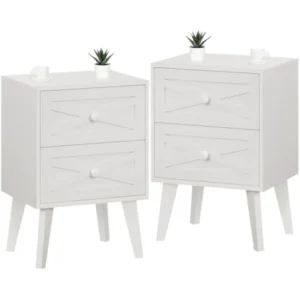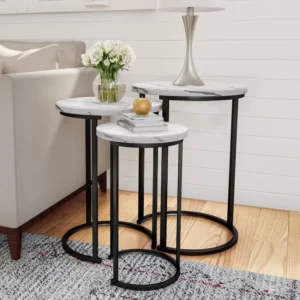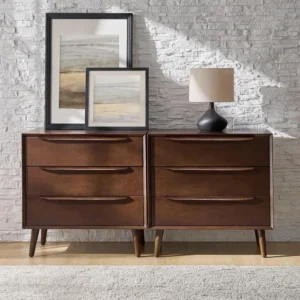Introduction: Understanding the Impact of a Large Coffee Table
A large coffee table isn’t just furniture—it’s a centerpiece that commands attention and shapes the entire feel of your living space. Generally speaking, coffee tables exceeding 48 inches (122 cm) in length or 36 inches (91 cm) in width fall into the “large” category, becoming natural focal points that require thoughtful arrangement.
Many homeowners struggle with common challenges when working with oversized coffee tables: rooms feeling cramped, awkward traffic patterns, or furniture that seems disconnected. The solution lies in understanding that proper arrangement creates both visual harmony and practical functionality—two principles at the heart of timeless mid-century modern design.
The relationship between your coffee table and surrounding furniture goes beyond mere aesthetics. It affects how people move through the space, interact with each other, and use the room daily. This is particularly true when working with large mid-century coffee tables that feature distinctive design elements meant to be showcased rather than hidden.
In this comprehensive guide, we’ll explore everything from basic measurements and furniture placement to lighting strategies and traffic flow considerations—all focused on creating a beautifully balanced room around your statement coffee table.
I. Essential Measurements: The Foundation of Successful Room Arrangement
Before rearranging furniture, understanding proper spacing creates the foundation for a well-designed room. When working with a large coffee table, these measurements become even more crucial:
Coffee Table to Seating Distance
– Ideal distance: 14-18 inches (35-45 cm)
– Close enough to reach items comfortably
– Far enough to allow leg movement and easy passage
Proportional Guidelines
– Coffee table length should be approximately two-thirds the length of your sofa
– Height should be within 1-2 inches (2.5-5 cm) of your sofa seat height
– In a large seating arrangement, the table should be central to all seats
Traffic Flow Measurements
– Minimum pathway width: 30 inches (76 cm)
– Preferred pathway width: 36-42 inches (91-107 cm)
– Main walkways through living areas: minimum 36 inches (91 cm)
Room Size Considerations
– Small rooms (under 200 sq ft/18.5 sq m): limit table width to 30 inches (76 cm)
– Medium rooms: can accommodate tables up to 48 inches (122 cm) long
– Large rooms: consider oversized tables or clustered table arrangements
The visual weight of a large coffee table requires careful balancing throughout the room. Successful space planning with oversized mid-century coffee tables involves treating the table as an anchor point while ensuring other furniture pieces create counterbalance without overcrowding.
Remember that these measurements serve as starting points. The specific dimensions of your furniture and the room itself will influence the perfect spacing for your unique arrangement.
II. Strategic Sofa Placement Around a Large Coffee Table
The relationship between your sofa and coffee table forms the foundation of your living room arrangement. With a large coffee table as your centerpiece, consider these strategic sofa placement options:
Face-to-Face Arrangement
This classic setup places sofas or a sofa and chairs directly opposite each other with the coffee table centered between them. This works particularly well with rectangular coffee tables in spacious rooms, creating a formal, conversation-friendly environment.
L-Shaped Configuration
An L-shaped sectional or two sofas at right angles provides excellent seating while framing a large coffee table. This arrangement works beautifully with square or rectangular tables and creates a casual, inviting atmosphere while maximizing seating.
U-Shaped Seating
For larger rooms, a U-shaped arrangement with a sofa and two chairs (or three separate sofas) creates an intimate conversation area while still highlighting your statement piece large coffee tables as the central focus.
Single Sofa Placement
When working with one main sofa, position it perpendicular to the longest wall with the coffee table in front. Balance the visual weight by adding accent chairs opposite or adjacent to create a complete seating area.
Floating vs. Wall Placement
Mid-century design often favors floating furniture away from walls to create open, flowing spaces. This approach works particularly well with large coffee tables, allowing them room to breathe while creating more intimate conversation areas. However, in smaller spaces, placing the sofa against a wall with the coffee table in front may be necessary to maintain adequate traffic flow.
Remember that mid-century design principles emphasize clean lines and organic forms working in harmony. Your sofa placement should create visual balance while allowing the distinctive design elements of your coffee table to shine.
III. Integrating Accent Chairs and Secondary Seating
Accent chairs play a crucial role in completing the seating arrangement around a large coffee table. They not only provide additional seating but also help balance the visual weight of the coffee table and add character to your space.
Chair Selection Tips:
– Choose profiles that complement but don’t compete with your coffee table
– Consider seat heights similar to your sofa (typically 16-19 inches/40-48 cm)
– Opt for chairs with exposed legs to create visual lightness around a substantial table
– Select styles that echo design elements from your coffee table (similar wood tones or complementary materials)
Strategic Chair Placement:
– Position chairs at a 45° angle to the sofa for better conversation flow
– Maintain 14-18 inches (35-45 cm) between chairs and the coffee table
– Allow 30-36 inches (76-91 cm) between chairs and other furniture pieces
– For rectangular tables, place chairs at the ends to create balanced visual weight
Incorporating Movable Seating:
– Add swivel chairs to create flexible conversation areas
– Include lightweight stools or poufs that can be moved as needed
– Consider armless chairs that can be tucked closer to the table when not in use
Mid-century design often features accent chairs with distinctive profiles but lower overall heights. This works beautifully with large coffee tables, as it allows the table to command attention while the chairs provide complementary design elements without overwhelming the space.
IV. Area Rug Selection and Placement Strategies
A well-chosen area rug anchors your seating arrangement and helps define the space around a large coffee table. Consider these strategies for optimal rug placement:
Size Guidelines:
– The rug should extend at least 18-24 inches (45-60 cm) beyond all sides of your coffee table
– Ideally, all furniture legs in the seating group should rest on the rug
– At minimum, the front legs of all seating should be on the rug
– In large open-concept spaces, use the rug to define the conversation area
Placement Rules:
– Center the rug in the seating area with equal margins on all sides
– Ensure the coffee table sits fully on the rug, never half-on/half-off
– In rectangular rooms, align the rug with the room’s orientation
– For open floor plans, position the rug to define the living area
Pattern and Material Considerations:
– Solid or subtly patterned rugs let statement mid-century modern large coffee tables shine
– Geometric patterns complement angular coffee tables
– Plush materials add textural contrast to wood or glass tables
– Performance fabrics work best in high-traffic areas around coffee tables
Layering Techniques:
– Place a smaller statement rug over a larger neutral base rug
– Ensure the top rug is centered under the coffee table
– Maintain at least 12 inches (30 cm) of the bottom rug visible on all sides
– Use layering to add texture and dimension to the space
The right rug not only protects your floors but also ties together all elements of your seating arrangement, creating visual cohesion that enhances the impact of your coffee table.
V. Balancing the Room with Complementary Furniture
Creating visual equilibrium around a large coffee table requires thoughtful selection and placement of complementary furniture pieces:
Side Table Integration:
– Position side tables within easy reach of seating (typically 12-18 inches/30-45 cm away)
– Choose heights equal to or slightly lower than sofa arm height
– Consider mid-century modern side end tables with similar design language but smaller scale
– Distribute side tables evenly throughout the seating arrangement
Media Console Placement:
– Position TV stands or media consoles perpendicular to the main seating
– Maintain 8-10 feet (2.4-3 meters) between seating and TV for comfortable viewing
– Choose consoles that echo materials or design elements from your coffee table
– Ensure the height doesn’t compete with the coffee table for visual attention
Storage Solutions:
– Incorporate low bookcases or credenzas along the perimeter
– Choose pieces with clean lines and minimal visual weight
– Use storage furniture to display decorative items that complement your coffee table
– Keep taller storage pieces away from the main seating area
Creating Visual Balance:
– Distribute furniture weight evenly around the room
– Balance a heavy coffee table with substantial pieces on opposite walls
– Create triangular arrangements of similar design elements throughout the room
– Incorporate negative space to prevent the room from feeling crowded
Proportion Principles:
– Maintain consistent height relationships between furniture pieces
– Choose complementary furniture approximately 2/3 the size of adjacent pieces
– Scale accessory furniture to the room size, not just to the coffee table
– Create a cohesive silhouette across all furniture pieces
Thoughtful furniture selection creates harmony while allowing your large coffee table to remain the focal point without dominating the space.
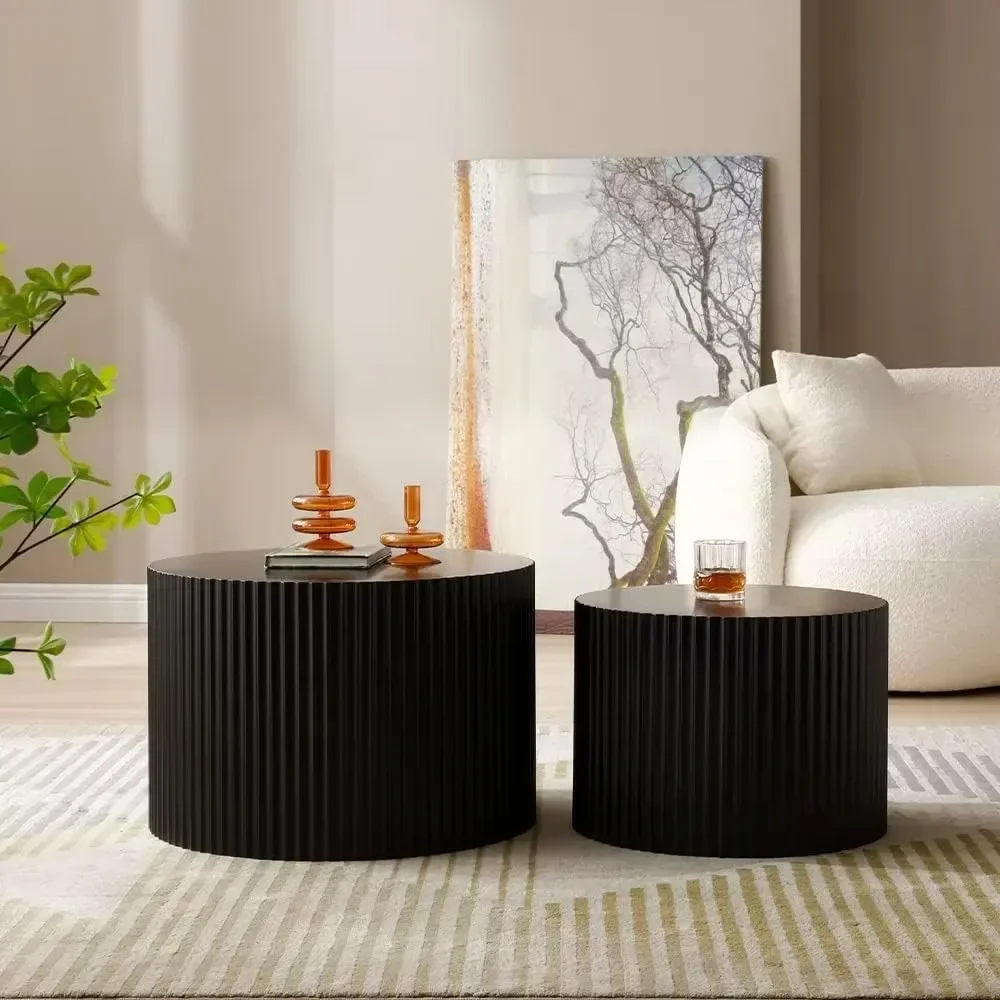
VI. Coffee Table Styling That Enhances Room Flow
How you style your coffee table is just as important as its placement. The right approach enhances both aesthetics and functionality:
The Rule of Thirds:
– Divide your table visually into thirds or quadrants
– Leave at least 1/3 of the surface completely clear
– Group items within the remaining sections for visual organization
– Create a balanced composition that looks intentional from all angles
Height Variation:
– Include items of different heights (low, medium, tall)
– Keep tall items under 12 inches (30 cm) to maintain open sightlines
– Position taller items toward the center or back of the table
– Create a gentle pyramid shape with your arrangement
Practical Organization:
– Use decorative trays to corral smaller items
– Create distinct zones for decorative and functional elements
– Position frequently used items at the edges for easy access
– Consider how the styling affects reaching across the table
Styling Formulas That Work:
– Stack of books + plant + decorative object
– Tray + candle + small sculpture + greenery
– Large bowl + art books + organic element
– Central low bowl flanked by matching candlesticks or objects
The design advantages of large mid-century coffee tables include ample styling space. This allows you to create seasonal displays, showcase collections, or maintain a minimalist aesthetic—whichever best suits your lifestyle and design preferences.
Remember that coffee table styling should enhance, not impede, the table’s functionality. Leave enough clear space for practical use while creating an aesthetically pleasing arrangement.
VII. Optimizing Traffic Flow Around a Large Central Piece
A beautiful arrangement means nothing if people can’t move comfortably through the space. Here’s how to ensure good traffic flow around your large coffee table:
Identifying Flow Problems:
– Watch for “pinch points” where pathways narrow to less than 30 inches (76 cm)
– Notice if people consistently bump into table corners
– Observe if guests need to shuffle sideways to navigate around furniture
– Check if accessing all seating requires awkward movements
Creating Clear Pathways:
– Maintain at least 30-36 inches (76-91 cm) for all walkways
– Establish direct routes to doors and frequently used areas
– Position furniture to create natural, intuitive paths through the room
– Consider floating furniture away from walls to create perimeter pathways
Shape Considerations:
– Round or oval tables improve flow in tight spaces by eliminating sharp corners
– Rectangular tables work best when aligned with the room’s natural pathways
– Consider coffee tables with rounded corners in high-traffic areas
– For particularly challenging spaces, explore bunching tables that can be reconfigured
Special Considerations:
– Families with children: ensure extra space for active movement
– Households with elderly members: create wider pathways (36+ inches/91+ cm)
– Pet owners: leave space for animals to navigate around furniture
– Entertainment-focused spaces: allow room for serving and gathering
Test your arrangement by walking all possible paths through the room. If you feel the need to turn sideways or step carefully anywhere, reconsider your furniture placement.
VIII. Lighting Strategies That Complement Your Arrangement
Strategic lighting enhances both the functionality and aesthetic impact of your coffee table arrangement:
Overhead Lighting Placement:
– Center chandeliers or pendant lights above the coffee table, not the room
– Hang fixtures 30-36 inches (76-91 cm) above the table surface
– Choose fixtures scaled to approximately 1/2 to 2/3 the table’s width
– Consider dimmable options to adjust the ambiance
Table Lamp Integration:
– Place matching lamps on side tables or consoles to frame the seating area
– Position lamps to provide light at reading height (typically 20-26 inches/50-66 cm above seat level)
– Choose lamp bases proportional to your side tables (approximately 1/3 the table height)
– Select shades that maintain open sightlines across the seating area
Floor Lamp Strategies:
– Position floor lamps behind seating in corners or gaps
– Use arc lamps to provide overhead light without ceiling fixtures
– Choose slim profiles that don’t compete visually with the coffee table
– Ensure lamp heights complement other vertical elements in the room
Highlighting the Coffee Table:
– Consider under-sofa lighting for subtle illumination
– Use table lamps with downward light to showcase table surfaces
– Position accent lights to highlight specific features of mid-century modern rectangular coffee tables
– Layer lighting sources at different heights to create dimension
Proper lighting transforms your arrangement from merely functional to truly spectacular, especially in evening hours when lighting creates atmosphere and defines the space.
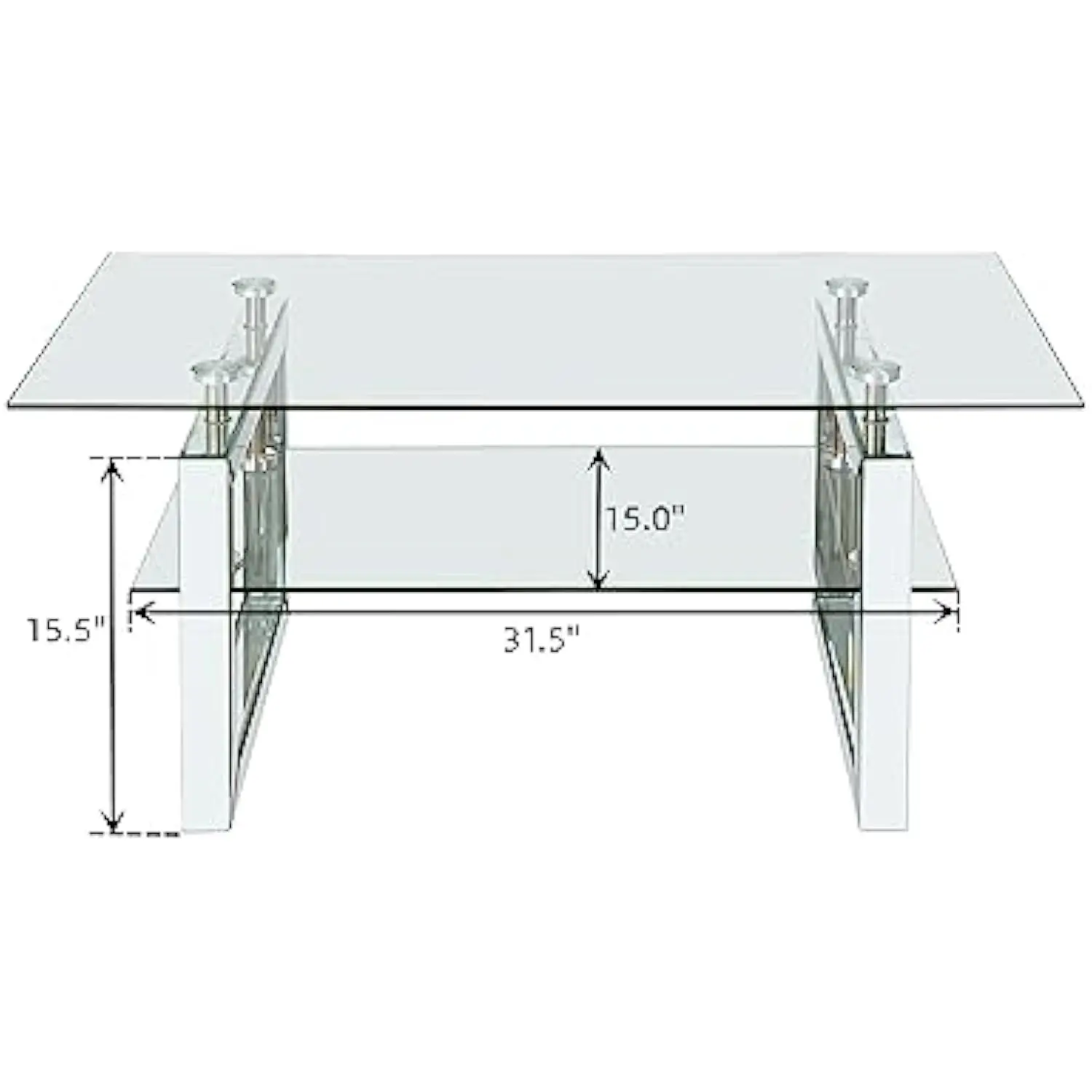
IX. Arranging Around Different Coffee Table Shapes
Each coffee table shape creates different opportunities and challenges for furniture arrangement:
Rectangular Tables:
– Work well with parallel seating arrangements
– Allow for clear delineation between conversation and traffic areas
– Position with the long side parallel to the main sofa
– Require more clearance on the long sides (18-24 inches/45-60 cm)
– Best suited for larger or rectangular rooms
Square Tables:
– Create balanced, symmetrical arrangements
– Work equally well from all sides, perfect for conversational groupings
– Position centered within a U-shaped or square seating arrangement
– Allow for equal access from all seating positions
– Ideal for square rooms or centered arrangements
Round/Oval Tables:
– Improve traffic flow by eliminating sharp corners
– Create a more intimate, conversation-friendly environment
– Position centered within the seating arrangement
– Allow 16-18 inches (40-45 cm) clearance all around
– Round coffee table options work particularly well in tight spaces or with sectional sofas
Freeform/Irregular Tables:
– Create visual interest and unique focal points
– Position to highlight their distinctive shape
– Allow extra clearance around unusual projections or edges
– Balance with simpler, more structured furniture pieces
– Make excellent conversation starters in any arrangement
Nested/Bunching Tables:
– Offer flexibility for different activities and group sizes
– Position with the largest table as the anchor
– Allow space for smaller tables to be fully pulled out when needed
– Consider traffic flow in both compact and expanded configurations
– Perfect for multipurpose rooms with changing needs
The shape of your coffee table should complement both your room’s dimensions and how you use the space. In mid-century design, form follows function—choose a shape that serves your lifestyle while creating visual harmony.
X. Solutions for Challenging Room Layouts
Even difficult spaces can accommodate large coffee tables with these targeted solutions:
Small Spaces:
– Choose a coffee table with storage to maximize functionality
– Consider glass or acrylic tables that create less visual weight
– Opt for raised tables with visible legs to create a sense of openness
– Position the table off-center if necessary to maintain traffic flow
– Scale down surrounding furniture to maintain proportion
Open-Concept Areas:
– Use your coffee table arrangement to define distinct zones
– Position seating with backs to different areas to create separation
– Anchor the arrangement with an appropriately sized area rug
– Create visual boundaries with consistent design elements
– Maintain sight lines across the space while establishing zones
Narrow Rooms:
– Choose oval or rectangular tables with narrow profiles
– Position the long edge parallel to the room’s length
– Create a pathway along one side rather than both
– Use smaller accent chairs to complete the seating arrangement
– Consider floating the arrangement in the center to create pathways on both sides
Working Around Architectural Features:
– Position furniture to frame, not fight against, columns or built-ins
– Use irregular room features to create natural divisions in the space
– Place the coffee table off-center to accommodate immovable features
– Create balanced asymmetry that makes awkward elements appear intentional
– Use the coffee table to anchor the arrangement despite architectural challenges
Multipurpose Spaces:
– Choose tables with adjustable heights for different activities
– Consider wheeled options that can be moved as needed
– Create zones that can function independently
– Position the coffee table where it serves multiple functions
– Ensure clear paths between different functional areas
The key to arranging seating around square coffee tables or any large table in challenging spaces is flexibility. Be willing to break conventional rules to create an arrangement that works for your specific room and needs.
Mid-Century Modern End Table Sets of 2, Mid-Century Modern Square Side & End Tables, Mid-Century Modern White Side & End Tables
$348.24 Select options This product has multiple variants. The options may be chosen on the product pageMid-Century Modern Solid Wood Coffee Tables, Mid-Century Modern Teak Coffee Tables
$879.95 Select options This product has multiple variants. The options may be chosen on the product pageMid-Century Modern Danish Coffee Tables, Mid-Century Modern Oval Coffee Tables, Mid-Century Modern Solid Wood Coffee Tables
$390.05 Select options This product has multiple variants. The options may be chosen on the product pageMid-Century Modern Nesting Side & End Tables, Mid-Century Modern Nesting Table Sets, Mid-Century Modern Round Side & End Tables
Price range: $239.35 through $273.06 Select options This product has multiple variants. The options may be chosen on the product pageMid-Century Modern End Table Sets of 2, Mid-Century Modern Walnut Side & End Tables
Price range: $978.89 through $1,957.38 Select options This product has multiple variants. The options may be chosen on the product pageMid-Century Modern Coffee & End Table Sets, Mid-Century Modern Coffee Table Sets, Mid-Century Modern Oval Coffee Tables
Price range: $257.48 through $331.04 Select options This product has multiple variants. The options may be chosen on the product page
XI. Is Your Large Coffee Table in the Right Place? Assessment Guide
Use this checklist to evaluate whether your current coffee table arrangement is working:
Movement & Accessibility
– Can everyone reach their seat without awkward movements?
– Is there at least 14-18 inches (35-45 cm) between the table and seating?
– Can people walk around the entire arrangement without obstacles?
– Are all pathways at least 30 inches (76 cm) wide?
Visual Balance
– Does the coffee table feel proportional to the surrounding furniture?
– Is the arrangement visually balanced from the main viewing angles?
– Does the coffee table complement rather than overwhelm the space?
– Is there a mix of heights, shapes, and visual weights throughout the room?
Functionality
– Can everyone seated comfortably reach the coffee table?
– Is there adequate space for typical activities (dining, games, work)?
– Does the arrangement support how you actually use the room?
– Can all seats access side tables or surfaces for drinks?
Conversation Flow
– Are seats positioned to facilitate easy conversation?
– Can people make eye contact without straining?
– Is the coffee table enhancing rather than blocking interaction?
– Does the arrangement feel naturally conducive to gathering?
If you answered “no” to any of these questions, consider adjusting your arrangement. Sometimes even small changes—moving a table a few inches or repositioning an accent chair—can dramatically improve both function and appearance.
XII. Can a Large Coffee Table Work in Your Room? When to Reconsider Size
Not every space can accommodate a large coffee table. Consider these factors when deciding if yours is the right scale:
Room Size Thresholds:
– Minimum room width: 10 feet (3 meters) for rectangular tables
– Minimum seating area: 8×10 feet (2.4×3 meters) for most large tables
– Clearance requirements: At least 30 inches (76 cm) for all pathways
Warning Signs Your Table Is Too Large:
– People consistently bump into corners or edges
– The table consumes more than 2/3 of the space between seating
– Accessing certain seats requires awkward movements
– The table visually overwhelms other furniture pieces
Alternative Solutions:
– Two smaller matching coffee tables instead of one large piece
– A round or oval table instead of a rectangular one
– A console table behind the sofa with side tables near seats
– A coffee table with a lower profile but similar surface area
When considering mid-century modern coffee tables, remember that their clean lines and organic forms often make them appear lighter than traditional tables of the same size. This design approach can allow for slightly larger pieces than conventional wisdom might suggest.
Balance your aesthetic preferences with practical needs. Even the most beautiful coffee table fails if it makes your space uncomfortable or difficult to navigate.
XIII. Beyond Furniture: Enhancing Your Arrangement with Decor
The right decorative elements complete your coffee table arrangement, creating a cohesive and finished look:
Wall Decor Coordination:
– Position artwork to create visual balance with your coffee table arrangement
– Hang art at eye level when seated (typically 42-48 inches/107-122 cm from the floor)
– Choose pieces that echo colors or materials found in your coffee table
– Use large statement pieces behind sofas and smaller groupings near accent chairs
Textile Integration:
– Layer textures through throw pillows that complement the coffee table material
– Add throws in colors that tie to your coffee table’s finish or design
– Choose window treatments that balance the visual weight of the table
– Consider rug textures that create contrast with the coffee table surface
Plant Placement:
– Position tall plants in empty corners to frame the arrangement
– Add small plants to the coffee table surface for organic elements
– Use planters that complement the table’s design aesthetic
– Create height variation through a mix of floor plants and tabletop greenery
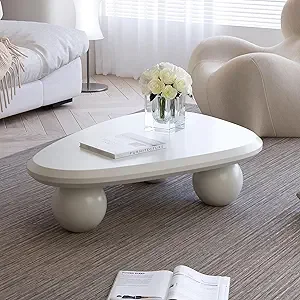
Color Coordination:
– Pull accent colors from the coffee table material or design
– Create a cohesive palette that flows from the coffee table throughout the room
– Use the 60-30-10 rule (60% dominant color, 30% secondary color, 10% accent color)
– Balance warm and cool tones throughout the arrangement
These decorative elements are the finishing touches that transform a well-arranged room into a truly designed space that feels complete and intentional.
XIV. Transforming Your Space: Before and After Scenarios
Consider these common arrangement problems and their transformative solutions:
Scenario 1: The Floating Island
Before: Furniture pushed against walls with a large coffee table isolated in the center, creating an awkward, disconnected feeling.
After: Seating brought forward to create proper distance from the coffee table, establishing an intimate conversation area with clear pathways around the perimeter.
Scenario 2: The Obstacle Course
Before: Large coffee table blocking the natural path between entry and seating, forcing people to walk around the entire arrangement.
After: Coffee table shifted slightly off-center, creating a direct pathway while maintaining functional relationships between all seating pieces.
Scenario 3: The Crowded Conversation
Before: Too many furniture pieces crowded around a large coffee table, creating a cramped, cluttered feeling.
After: Removal of unnecessary pieces, with remaining furniture properly spaced and round vs. rectangle coffee tables chosen based on room flow needs.
Scenario 4: The Unbalanced Arrangement
Before: Heavy visual weight on one side of the room with the coffee table awkwardly positioned to match.
After: Redistribution of visual elements to create balance, with the coffee table centered within a thoughtfully arranged seating group.
These transformations demonstrate how proper arrangement principles can dramatically improve both the function and aesthetics of your space without necessarily requiring new furniture.
XV. When Should You Rearrange? Adapting Your Setup for Different Uses
Your room arrangement isn’t permanently fixed—consider adapting it for:
Seasonal Changes:
– Summer: Create more open space and lighter arrangements
– Winter: Tighten seating groups for cozier conversation areas
– Holiday seasons: Allow space for temporary decorations or special displays
Entertainment Needs:
– Intimate gatherings: Tighter, face-to-face arrangements centered on the coffee table
– Larger parties: Open up the arrangement with clear pathways and multiple conversation areas
– Media viewing: Orient seating for optimal screen visibility while maintaining coffee table access
Signs It’s Time to Reassess:
– Traffic patterns have changed in your home
– The room feels stagnant or uninspiring
– Furniture shows wear patterns indicating improper use
– Your lifestyle or household needs have evolved
Quick-Impact Changes:
– Rotating your coffee table 90 degrees
– Swapping the position of accent chairs
– Shifting the entire arrangement a few feet in any direction
– Adding or removing a single furniture piece
Remember that mid-century design philosophy embraces both form and function. Your arrangement should evolve as your needs change while maintaining the core principles of balance, proportion, and visual harmony.
XVI. Expert Tips from Interior Design Professionals
Professional designers consistently recommend these principles for successful coffee table arrangements:
- Create conversation distances of 8 feet (2.4 meters) or less between people seated opposite each other
- Vary furniture heights intentionally to create visual interest and define spaces
- Design for negative space around key pieces—not every inch needs to be filled
- Consider traffic patterns first before placing any furniture
- Test furniture arrangements before committing by using paper templates or boxes
- Layer lighting at three levels: floor, table, and overhead
- Prioritize function over convention when standard arrangements don’t serve your needs
- Create balance through asymmetry rather than perfect symmetry for more dynamic spaces
The most significant difference between amateur and professional arrangements is intentionality—every placement decision serves both aesthetic and functional purposes rather than merely following trends or conventions.
XVII. Your Next Steps: Implementing a New Arrangement
Ready to transform your space? Follow this implementation plan:
1. Planning Phase:
– Measure your room and create a scale drawing or use a room planner app
– Record the dimensions of all furniture pieces
– Take “before” photos from multiple angles for comparison
– List activities the room needs to accommodate
– Identify fixed elements (windows, doors, outlets) that affect placement
2. Preparation Steps:
– Clear the room of small items and decor
– Gather furniture sliders or felt pads for easy movement
– Recruit help for moving large pieces safely
– Have measuring tape ready for checking clearances
3. Implementation Process:
– Start with the largest piece (typically the sofa)
– Position the coffee table next, checking all clearances
– Add seating pieces one by one, testing distances
– Leave paths clear as you work
– Step back frequently to assess the arrangement from different angles
4. Refinement:
– Live with the new arrangement for a few days before making final judgments
– Make small adjustments as you notice flow or function issues
– Add back decor items thoughtfully, not habitually
– Seek feedback from other household members
If after several attempts the arrangement still doesn’t feel right, consider consulting a professional designer who can provide fresh perspective and specialized knowledge.
XVIII. Is Your Coffee Table the Problem? When to Consider Alternatives
Sometimes the coffee table itself needs reconsideration. Ask yourself these questions:
Is shape the real issue?
– A rectangular room might work better with a rectangular table
– High-traffic areas often flow better with round tables
– L-shaped sectionals typically pair well with square or round tables
Would multiple smaller tables work better?
– Nesting tables provide flexibility for different activities
– Two identical smaller tables can create the same surface area with better traffic flow
– Side tables positioned between chairs might eliminate the need for a central table
Is height a factor?
– Lower tables (14-16 inches/35-40 cm) work better with deep, low sofas
– Higher tables (18-20 inches/45-50 cm) pair well with more formal, upright seating
– Adjustable-height tables can adapt to different activities
Could a different style solve the problem?
– Tables with visible legs create a sense of lightness
– Storage coffee tables reduce clutter in small spaces
– Glass or acrylic tables maintain openness while providing function
While a beautiful coffee table can be the heart of your living room, it must ultimately serve your lifestyle. Be willing to reimagine this central piece if it’s creating more challenges than comfort in your space.
Remember that at Hearth Forms, we believe the best interior design balances form and function—creating spaces that look beautiful while working perfectly for your real life.


